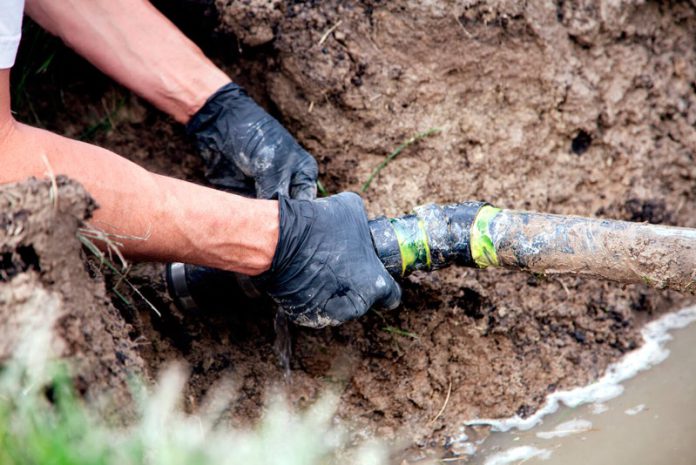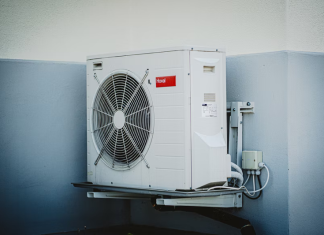If you’re in the market for a home with a septic tank, then you’ll want to know how long that septic tank is going to last. Unfortunately, replacing a septic tank costs thousands of dollars, so it’s essential to understand what kind of lifespan you can expect from a septic system.
In this blog post, we’ll discuss why some septic tanks last longer than others and what you can do to make sure your septic system lasts as long as possible.
What Are The Main Parts Of A Septic System?
If properly designed, constructed, and maintained, your septic system can provide long-term, effective treatment of household wastewater. First, however, all homeowners need to know pertinent information about their system and where to locate it on their property.
A septic system consists of several different parts, and each of them is necessary for its successful operation. The first component is the pipe that leads out of the home and into the system. The second principal component is the septic tank, typically buried underground and contains all of your household wastewater. The third part is a drainfield, which consists of pipes that lead from the tank to a series of perforated pipes buried in the ground. Finally, the fourth part is the soil, which acts as a natural filter for the wastewater.
The Pipe From Your House
Your septic system is connected to your home via a pipe that carries wastewater away from sinks, toilets, showers, and bathtubs. This pipe is also known as the sanitary sewer line, and it’s essential to make sure that it’s always clear of debris so that wastewater can flow freely. These lines are usually constructed out of ABS or PVC plastic piping.
The Septic Tank
A septic tank is typically buried underground and contains all your household wastewater. It is watertight and made of various materials depending on the contractor who installed it.
It can be constructed out of:
- Fiberglass
- Steel
- Concrete
- Polyethylene
It holds the wastewater long enough for gravity to settle any solids contained in the wastewater. These solids eventually form sludge which houses the microbes that treat the water. Oil and grease float to the surface, and there are physical structures to keep solids from entering the drainfield.
The Drainfield
The drainfield consists of pipes that lead from the tank to another set of perforated pipes buried in the ground. The purpose of this is to allow for a slow release of treated wastewater into shallow soil layers where it can be filtered naturally by the soil.
As new water enters the system, it continuously pushes existing water through the drainfield. Therefore, the drainfield should be installed on a gradual slope so that the wastewater can flow effortlessly from the tank to the pipes using gravity.
The Soil
The soil is the final filter for the wastewater, and it’s crucial to make sure that it’s healthy and free of debris. In addition, the soil in the drainfield should be porous enough for water to seep through easily. A porous substrate allows for an even distribution of wastewater into the ground, which helps to prevent groundwater contamination.
Septic systems rely on percolation and purification processes to remove bacteria, viruses, and excess nutrients like phosphorous from the water. If your drainfield is working correctly, a biomat comprised of live and dead anaerobic bacteria layer forms that will grow and eventually slow down the infiltration rate.
This layer is less permeable than the soil around it and allows for extended treatment time to remove the pathogens in the water. A biomat layer is good in moderation, but if it becomes too overgrown, the hydraulic rate (or wastewater flow out of your system) will exceed the infiltration rate causing ponding.
How Long Do Septic Systems Typically Last?
Now that you understand more about your residential septic system let’s dive deeper into the typical lifespans of various septic tanks. If properly designed, constructed, and maintained, your septic system can provide long-term, effective treatment of household wastewater.
The main types of septic tanks:
- Concrete septic tanks typically last between 35-50 years
- A high-quality plastic (polypropylene) septic tank will last about 30-40 years.
- Steel septic tanks can last up to 20-30 years
- Fiberglass septic tanks typically only last 20-30 years.
The lifespan of your septic system depends on several different factors, some of which are outside of your control. Those factors can include:
- When it was installed
- The Manufacturer
- Soil type
- Location of the system
Septic tanks play a critical role in effectively managing wastewater, and homeowners should maintain them correctly to ensure their lifespan. Homeowners have a responsibility to take care of their system and keep it running for as long as they can.
Ensuring septic system longevity means that homeowners should be keeping up with maintenance and performing the proper care in the home. They should be:
- Scheduling regular pumping (every 3-7 years)
- Have it inspected annually
- Conserving water usage
- Watch what you flush down the drains (no chemicals, paints, grease, food scraps, septic additives, etc.)
Also, if not managed correctly, irreparable damage could be done to their drainfield, rendering the septic system useless. Finally, while homeowners should consider every angle that helps them properly care for their septic system, some solutions don’t work.
For instance, the use of septic additives has been discouraged by scientific studies and shows very little reason to use them. Moreover, homeowners can direct water drainage away from the drainfield. Refraining from driving or parking over the drain field will also help reduce damage or compact the soil. Finally, keep large trees or shrubs away as their roots may clog and damage perforated drain pipes.
How Much Does It Cost To Replace Your System?
The septic system replacement cost can vary depending on the size, type, and location. But, generally speaking, you can expect to pay between $1500-$5000 for a replacement. That implies that you’re getting a 1,250-gallon tank installed, which is ideal for three- or four-bedroom homes.
The cost of maintenance and repairs are generally cheaper, though, ranging from around $200-$700. Annual maintenance should include pumping, inspecting, and fixing minor component failures. But it’s essential to keep in mind that this is a rough estimate, and the price can change depending on the state and the contractor.
Signs Your Septic System is Failing
No one wants to deal with septic system failure and have a problem on their hands. However, if your system is malfunctioning, it’s potentially released partially treated water into the environment.
A malfunctioning system can impact groundwater, streams, rivers and pose a significant health risk. Plus, nasty odors from failing septic systems can affect property values. So, if you’re looking for signs that your septic system might be on the fritz, here are some things to look out for:
- Slow drains in sinks or toilets
- Gurgling noises coming from your drains
- Wet spots or standing water on your property
- Backed up plumbing issues
- Sewage smells on your property (near the septic tank or drainfield)
- Grass growing too green (this can be a sign of over-fertilization)
- Bacteria in your well water
What To Do If Your Septic System is Crappy?
Septic system emergencies don’t wait for daylight hours or weekends. That’s why Fred A Cook Jr. Inc offers a 24/7 emergency service so you can rest assured that your septic system is in good hands. Have you hired a professional to help you keep your septic system in good working order? If not, now is the time.
We have the most experienced technicians in the area and the most modern truck fleet to provide timely, error-free, and quality service to our clients. In addition, we have the experience and knowledge to handle all of your septic needs, from routine maintenance to emergency repairs. So if you’re looking for reliable, affordable service, call us today!















